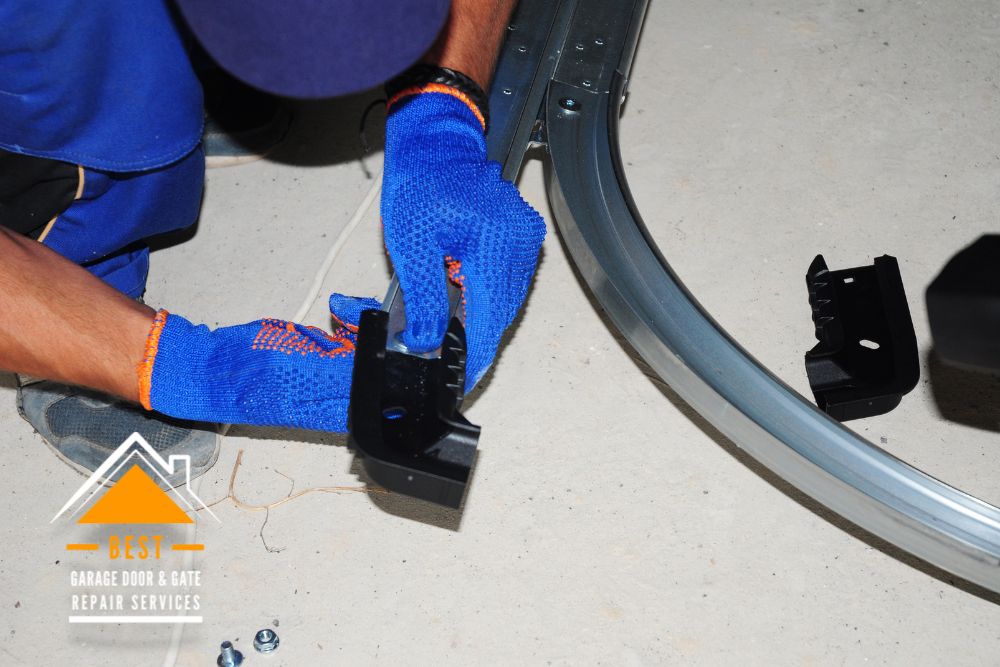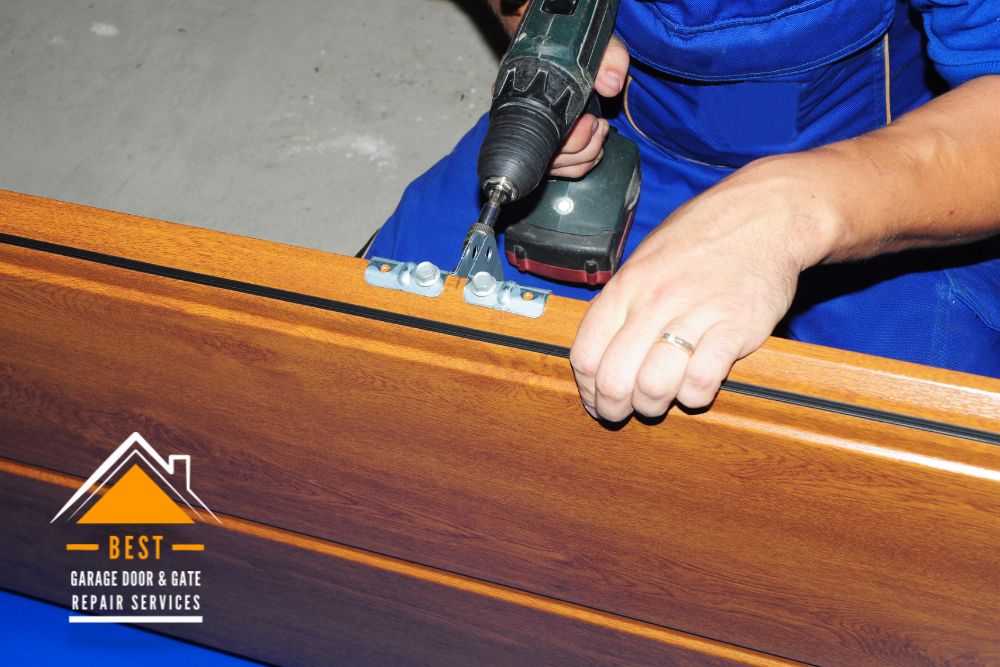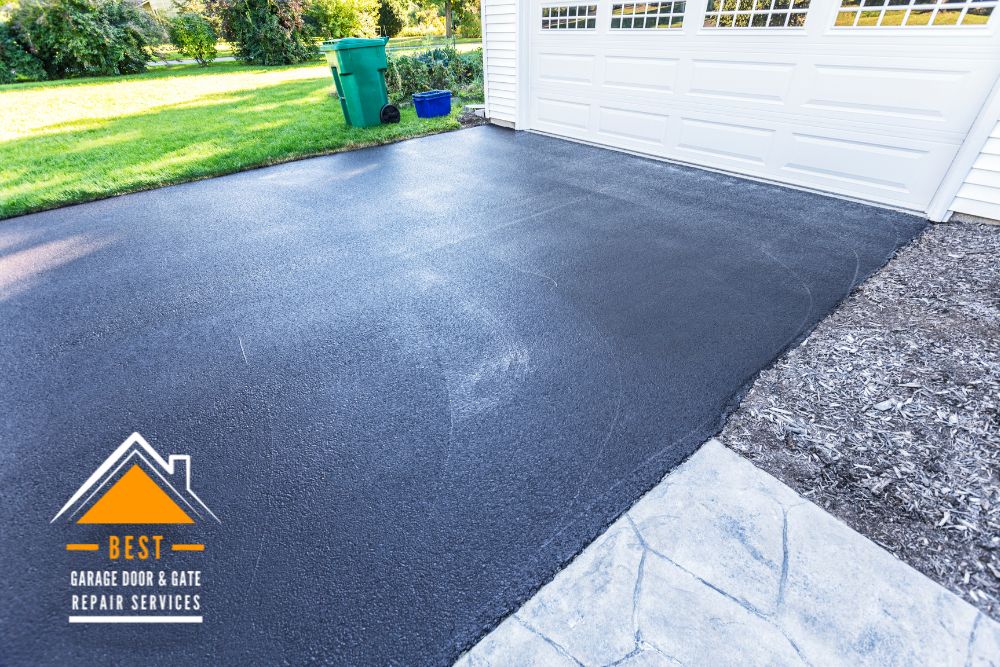It’s even more critical to have a weatherproof garage to store items that don’t belong inside but need to be protected from the elements. Where else would you put your car when bad weather is on the way?
Garages need to be sturdy against all kinds of weather, but they can’t retain that strength; they require help from other house parts. To ensure a long and consistent service life, weatherproofing is essential. However, what does it imply for your garage? This half-inside, half-outside place is a beast unto itself! Indeed, you’ve dealt with the procedure within your house and probably even its external components.
We’ll go through a couple of strategies to protect the area’s contents from the elements below.

The Meat And Potatoes Of Weatherstripping
Table of Contents
The Meat And Potatoes Of Weatherstripping
The phrase “weatherstripping” can be misconstrued when used to your garage door, subject to wear and tear.
However, when used in an interior context, it means to seal the edges of materials against air leaks—and it implies the same thing concerning your garage door. As a noun, it might refer to the actual materials utilized to execute the task (perhaps because these materials tend to come in long strips). Weather-sealing is another term for this procedure.
Why Use Weather-strip?
As long as your residential garage door doesn’t have any significant gaps that need to be repaired, weatherstripping is the best way to keep out cold air and snow while safeguarding the goods stored within.
However, the weatherstripping on your garage door has far-reaching impacts. It is equally necessary to weather-seal your garage to protect your property from damaging factors like heavy rain, snow, hail, and wind. A leaky garage may cause water damage to your floor and seep into your home’s interior if it freezes.
The sides of the garage door might allow cold air and moisture to leak in. There are, however, ways to avoid this.

Why Use Weather-strip
1. Perimeter Seals
Even the garage door’s sides may become chilly in the winter. That’s where weatherstripping comes in. A brush or rubber strip seals the door’s edges and bottom. These strips degrade over time, causing them to fail. Replacement is straightforward – remove the old weather stripping out of its channel and slip in new stripping that is cut to the right length.
The seal may be fastened with nails on particular doors rather than a channel.
2. Threshold Seal
Your garage door probably doesn’t rest precisely flat on the ground because of the tiny changes in the surface. Threshold storm seals are rubber seals placed on the garage floor at the point where the door sits when shut. An airtight, watertight seal is created when a threshold seal and weather stripping are used to secure your garage.
When you are weatherstripping your garage door, you’re also protecting your home’s interior from the elements. Here are a handful of critical areas to pay attention to while conducting this vital duty.
3. Your Garage Door Seal
The bottom of your garage door is lined with a lengthy strip of material like this. Your garage door shuts on it every time, but don’t worry—it was built for this! To prevent water, snow, and the like from entering the building, this procedure seals the outside of the building.
If you find drafts or cracks in the seal, it’s time to call in a professional for garage door repair. Garage door seals exist in various forms, sizes, and materials; not all of them will function with the same kind of door. Don’t waste any money or time by contacting your local garage door business.
4. Doorstop Weather Stripping
As with the Garage Door Seal, this material can be located on the top and sides of your garage door and acts as a waterproof barrier between the inside and outside. Cracks, drafts, rips, and the like are all signs that something isn’t working properly.

It’s Time To Think About Smart Garage Door Technology!
It’s Time To Think About Smart Garage Door Technology!
With remote opening and shutting technologies from firms like LiftMaster, it’s simpler than ever to be prepared for everything. If your garage door is open when a storm hits and you’re away from home, it doesn’t matter how much weatherstripping you have.
To keep your home safe, smart garage door technology also allows you to establish a timer for when your door will open and close. This improves both weatherproofing and security at the same time.
Insulation Upgrades Are Always a Smart Investment!
However, weatherproofing is helpful since it is a buffer between the high external temperatures and the milder, semi-indoor temps. Insulating your garage door is an excellent idea if you keep valuables like antique vehicles or family heirlooms sensitive to temperature extremes.

Insulation Upgrades Are Always a Smart Investment!
Bottom Line
A connected garage is a part of your home. Your total energy consumption may be affected by the heat lost via your garage door. Around garage doors, moisture may potentially enter and cause rot or mold issues inside. Fortunately, making the changes mentioned above to your garage door may help keep your house and garage warm and dry.


Leave A Comment